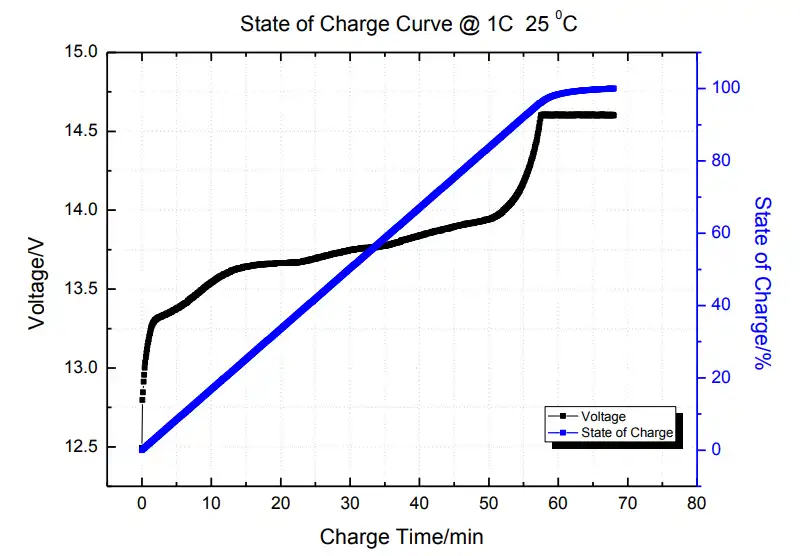Battery technology has become an essential component of our daily lives, powering everything from smartphones to electric vehicles. One interesting aspect of battery performance that for many is a source of fascination is the charge curve, particularly when it deviates from established specifications. A charge curve illustrates how a battery’s voltage or capacity changes during charging and discharging cycles. When these curves display anomalies, it can not only confuse users but also indicate underlying problems begging for attention.
Understanding the intricacies of battery charging, especially when the observed charge curve strays from the typical expected pattern, is critical for both consumer and industrial applications. We’ll delve into the common observations one might encounter with out-of-spec charge curves, troubleshoot potential causes, and suggest effective solutions.
At the outset, let’s clarify what constitutes a normal charge curve. During the charging process, a lithium-ion battery typically exhibits three distinct phases: the constant current (CC), constant voltage (CV), and the tapering stage. In the CC phase, the battery accepts a steady current until it reaches its predetermined voltage. Next, in the CV phase, the current decreases while voltage remains constant, and finally, a tapering occurs as the battery approaches full capacity. This predictable behavior is vital for ensuring longevity and performance.
Noticing that your battery’s charge curve does not conform to this typical three-phase progression can induce a sense of alarm. Perhaps the current dips suddenly without reaching the voltage limit, or the capacity levels off prematurely. Such deviations often point toward potential malfunctions within the battery, its management system, or the charging apparatus. One compelling observation is how user environments influence charge behavior—temperature, for instance, plays a critical role in charge efficiency and overall health.
Temperature affects the kinetics of electrochemical reactions, which can alter charge curves. Batteries operating in suboptimal conditions—either too hot or too cold—can exhibit rapid capacity fade, increased internal resistance, and even safety hazards. For instance, a high ambient temperature can cause a battery to charge too quickly, leading to gas generation and, in worst-case scenarios, thermal runaway. Conversely, cool temperatures may impede the battery’s ability to accept a charge, leading to an anemic charge curve punctuated by sluggish recovery.
Another factor worth considering is the quality and compatibility of the charger being utilized. Charge profiles can show discrepancies between different chargers—an inferior or mismatched charger can fail to adhere to the specified parameters needed to appropriately charge a battery. For example, using a rapid charger on a battery designed for a slower charge can result in undue stress and lead to battery life degradation. On the flip side, a charger that operates below the required specifications will yield underwhelming charge rates, manifesting as a larger than normal charge time or incomplete capacity recovery.
Moving on to the health of the battery itself, it’s essential to thoroughly assess its age and history. Since batteries experience capacity fade over time due to chemical processes including lithium plating and loss of active material, older batteries often showcase irregular charge curves. Such aging makes them sensitive to fluctuations, resulting in variations that don’t align with performance when they were new. Additionally, theoretically, a battery can undergo irreversible deterioration due to excessive cycling or prolonged storage in a fully charged or discharged state.
For troubleshooting, one should begin with a meticulous inspection of all components involved in the charging process, including cables, connectors, and the charging device itself. Checking for resistance across connections can reveal anomalies that contribute to erratic charge curves. Testing the battery with a multimeter can also uncover underlying issues such as voltage imbalances between cells in multi-cell configurations.
Assuming all components check out, examining the specific chemistry and design of the battery may lead to deeper insights. Different chemistries respond distinctly to charging profiles, and understanding these nuances is crucial. For instance, lithium iron phosphate (LiFePO4) batteries, lauded for their thermal stability and high cycle life, maintain a flatter discharge curve but may behave differently under various loading conditions compared to more commonly used lithium-ion batteries. The charge curve for each type can be almost as unique as a fingerprint, requiring careful attention to detail.
Once potential causes have been located, remediation strategies can include recalibrating the battery management system (BMS) if the device employs one. This might involve resetting the BMS to restore traditional operational parameters and enhance charge performance. In some instances, merely giving a battery a complete discharge and subsequent charge cycle can recalibrate its charge algorithm, promoting a more harmonious charge curve thereafter.
In more serious cases of internal battery damage, replacing the battery might be unavoidable. Safety cannot be compromised, and while repairs are sometimes feasible, replacements often guarantee better long-term performance, especially in high-demand applications.
In conclusion, the quest to understand the peculiarities surrounding out-of-spec charge curves is multi-faceted and essential for maximizing battery lifespan and performance. By systematically diagnosing symptoms—whether they stem from environmental factors, charger efficiency, aging, or chemical inconsistencies—users can employ informed strategies to troubleshoot and resolve issues effectively. The complexities of battery charging are not mere technicalities; they are an engaging partnership between chemistry and technology that empowers our modern lifestyles. Addressing these challenges will not only enhance user experience but also unveil the impressive capabilities waiting to be harnessed in the realm of battery technology.
